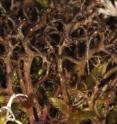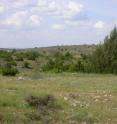Flexible partnership allows lichens to occur in different habitats
Lichens are symbiotic organisms consisting of a fungal partner and one or several algal partners. The association is so close that scientists until 1867 were not aware that lichens actually consist of two different partners. After the Swiss botanist Simon Schwendener discovered the dual nature of lichens, lichenologists were focusing on the fungal partner when studying lichens, since it was often believed that only few algae are involved in the symbiosis. Molecular studies have shown that it was a mistake to neglect the algal partner for a long time. The diversity of algal partners have been shown to be much higher than expected. In addition the study by Dr. Christian Printzen, Senckenberg Research Institute (Frankfurt), and his colleagues in Frankfurt and Madrid has shown that, by choosing different algal partners, lichen fungi are able to colonize different ecosystems.
The study focuses on the Spiny Heath Lichen (Cetraria aculeata), which has a peculiar distribution range. It belongs to the so-called bipolar species that occur in polar and alpine regions of the northern and southern Hemisphere. However, this species also occurs in the climatically different Mediterranean region with dry steppe-like vegetation. Dr. Printzen's studies now show that this distribution can be explained by the presence of different algal species in the polar vs. Mediterranean populations.
The paper, published in the open access journal Mycokeys, discusses the genetic differences of these algae and their evolutionary and ecological implications. "It is an example how molecular techniques in tandem with ecophysiological studies can enhance our knowledge of the biology of this fascinating type of symbiosis.," comments Dr. Christian Printzen the lead author of the study.
Source: Pensoft Publishers
Other sources
- Flexible partnership allows lichens to occur in different habitatsfrom PhysorgTue, 23 Apr 2013, 19:48:42 UTC
- Flexible partnership allows lichens to occur in different habitatsfrom Science DailyTue, 23 Apr 2013, 19:45:53 UTC


